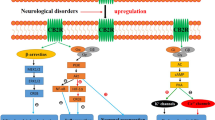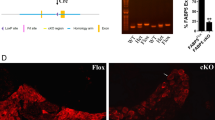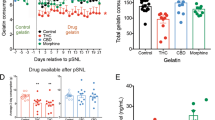Abstract
Although endocannabinoids constitute one of the first lines of defense against pain, the anatomical locus and the precise receptor mechanisms underlying cannabinergic modulation of pain are uncertain. Clinical exploitation of the system is severely hindered by the cognitive deficits, memory impairment, motor disturbances and psychotropic effects resulting from the central actions of cannabinoids. We deleted the type 1 cannabinoid receptor (CB1) specifically in nociceptive neurons localized in the peripheral nervous system of mice, preserving its expression in the CNS, and analyzed these genetically modified mice in preclinical models of inflammatory and neuropathic pain. The nociceptor-specific loss of CB1 substantially reduced the analgesia produced by local and systemic, but not intrathecal, delivery of cannabinoids. We conclude that the contribution of CB1-type receptors expressed on the peripheral terminals of nociceptors to cannabinoid-induced analgesia is paramount, which should enable the development of peripherally acting CB1 analgesic agonists without any central side effects.
This is a preview of subscription content, access via your institution
Access options
Subscribe to this journal
Receive 12 print issues and online access
$209.00 per year
only $17.42 per issue
Buy this article
- Purchase on Springer Link
- Instant access to full article PDF
Prices may be subject to local taxes which are calculated during checkout








Similar content being viewed by others

References
Walker, J.M. & Hohmann, A.G. Cannabinoid mechanisms of pain suppression. Handb. Exp. Pharmacol. 168, 509–554 (2005).
Pacher, P., Batkai, S. & Kunos, G. The endocannabinoid system as an emerging target of pharmacotherapy. Pharmacol. Rev. 58, 389–462 (2006).
Freund, T.F., Katona, I. & Piomelli, D. Role of endogenous cannabinoids in synaptic signaling. Physiol. Rev. 83, 1017–1066 (2003).
Piomelli, D. The endocannabinoid system: a drug discovery perspective. Curr. Opin. Investig. Drugs 6, 672–679 (2005).
Patwardhan, A.M. et al. The cannabinoid WIN55,212-2 inhibits transient receptor potential vanilloid 1 (TRPV1) and evokes peripheral antihyperalgesia via calcineurin. Proc. Natl. Acad. Sci. USA 103, 11393–11398 (2006).
Oliver, D. et al. Functional conversion between A-type and delayed rectifier K+ channels by membrane lipids. Science 304, 265–270 (2004).
Ledent, C. et al. Unresponsiveness to cannabinoids and reduced addictive effects of opiates in CB1 receptor knockout mice. Science 283, 401–404 (1999).
Zimmer, A., Zimmer, A.M., Hohmann, A.G., Herkenham, M. & Bonner, T.I. Increased mortality, hypoactivity and hypoalgesia in cannabinoid CB1 receptor knockout mice. Proc. Natl. Acad. Sci. USA 96, 5780–5785 (1999).
Ibrahim, M.M. et al. CB2 cannabinoid receptor mediation of antinociception. Pain 122, 36–42 (2006).
Kuhn, R., Schwenk, F., Aguet, M. & Rajewsky, K. Inducible gene targeting in mice. Science 269, 1427–1429 (1995).
Marsicano, G. et al. CB1 cannabinoid receptors and on-demand defense against excitotoxicity. Science 302, 84–88 (2003).
Agarwal, N., Offermanns, S. & Kuner, R. Conditional gene deletion in primary nociceptive neurons of trigeminal ganglia and dorsal root ganglia. Genesis 38, 122–129 (2004).
Marsicano, G. et al. The endogenous cannabinoid system controls extinction of aversive memories. Nature 418, 530–534 (2002).
Rubino, T ., Vigano, D ., Massi, P . & Parolaro, D . Changes in the cannabinoid receptor binding, G protein coupling and cyclic AMP cascade in the CNS of rats tolerant to and dependent on the synthetic cannabinoid compound CP55,940. J. Neurochem. 75, 2080–2086 (2000).
Ji, R.R., Baba, H., Brenner, G.J. & Woolf, C.J. Nociceptive-specific activation of ERK in spinal neurons contributes to pain hypersensitivity. Nat. Neurosci. 2, 1114–1119 (1999).
Hartmann, B. et al. The AMPA receptor subunits GluR-A and GluR-B reciprocally modulate spinal synaptic plasticity and inflammatory pain. Neuron 44, 637–650 (2004).
Tsay, D.G. et al. Experimental acute pancreatitis. In vitro magnetic resonance characteristics. Invest. Radiol. 22, 556–561 (1987).
Kress, M. & Guenther, S. The role of [Ca2+]i in the ATP-induced heat sensitization process of rat nociceptive neurons. J. Neurophysiol. 81, 2612–2619 (1999).
Dogrul, A. et al. Topical cannabinoid antinociception: synergy with spinal sites. Pain 105, 11–16 (2003).
Pertwee, R.G. The ring test: a quantitative method for assessing the 'cataleptic' effect of cannabis in mice. Br. J. Pharmacol. 46, 753–763 (1972).
Richardson, J.D., Kilo, S. & Hargreaves, K.M. Cannabinoids reduce hyperalgesia and inflammation via interaction with peripheral CB1 receptors. Pain 75, 111–119 (1998).
Pascual, D., Goicoechea, C., Suardiaz, M. & Martin, M.I. A cannabinoid agonist, WIN55,212-2, reduces neuropathic nociception induced by paclitaxel in rats. Pain 118, 23–34 (2005).
Fox, A. et al. The role of central and peripheral Cannabinoid1 receptors in the antihyperalgesic activity of cannabinoids in a model of neuropathic pain. Pain 92, 91–100 (2001).
Valiveti, S., Hammell, D.C., Earles, D.C. & Stinchcomb, A.L. Transdermal delivery of the synthetic cannabinoid WIN55,212-2: in vitro/in vivo correlation. Pharm Res. 21, 1137–1145 (2004).
Bridges, D., Ahmad, K. & Rice, A.S. The synthetic cannabinoid WIN55,212-2 attenuates hyperalgesia and allodynia in a rat model of neuropathic pain. Br. J. Pharmacol. 133, 586–594 (2001).
Decosterd, I. & Woolf, C.J. Spared nerve injury: an animal model of persistent peripheral neuropathic pain. Pain 87, 149–158 (2000).
Hohmann, A.G. & Herkenham, M. Localization of central cannabinoid CB1 receptor messenger RNA in neuronal subpopulations of rat dorsal root ganglia: a double-label in situ hybridization study. Neuroscience 90, 923–931 (1999).
Bridges, D. et al. Localisation of cannabinoid receptor 1 in rat dorsal root ganglion using in situ hybridisation and immunohistochemistry. Neuroscience 119, 803–812 (2003).
Binzen, U. et al. Co-expression of the voltage-gated potassium channel Kv1.4 with transient receptor potential channels (TRPV1 and TRPV2) and the cannabinoid receptor CB1 in rat dorsal root ganglion neurons. Neuroscience 142, 527–539 (2006).
Mitrirattanakul, S. et al. Site-specific increases in peripheral cannabinoid receptors and their endogenous ligands in a model of neuropathic pain. Pain 126, 102–114 (2006).
Shire, D. et al. An amino-terminal variant of the central cannabinoid receptor resulting from alternative splicing. J. Biol. Chem. 270, 3726–3731 (1995).
Coutts, A.A., Irving, A.J., Mackie, K., Pertwee, R.G. & Anavi-Goffer, S. Localisation of cannabinoid CB1 receptor immunoreactivity in the guinea pig and rat myenteric plexus. J. Comp. Neurol. 448, 410–422 (2002).
Martin, W.J., Lai, N.K., Patrick, S.L., Tsou, K. & Walker, J.M. Antinociceptive actions of cannabinoids following intraventricular administration in rats. Brain Res. 629, 300–304 (1993).
Azad, S.C. et al. Circuitry for associative plasticity in the amygdala involves endocannabinoid signaling. J. Neurosci. 24, 9953–9961 (2004).
Meng, I.D., Manning, B.H., Martin, W.J. & Fields, H.L. An analgesia circuit activated by cannabinoids. Nature 395, 381–383 (1998).
Finn, D.P. et al. Effects of direct periaqueductal grey administration of a cannabinoid receptor agonist on nociceptive and aversive responses in rats. Neuropharmacology 45, 594–604 (2003).
Martin, W.J., Loo, C.M. & Basbaum, A.I. Spinal cannabinoids are anti-allodynic in rats with persistent inflammation. Pain 82, 199–205 (1999).
Calignano, A., La Rana, G., Giuffrida, A. & Piomelli, D. Control of pain initiation by endogenous cannabinoids. Nature 394, 277–281 (1998).
Kolesnikov, Y.A., Jain, S., Wilson, R. & Pasternak, G.W. Peripheral morphine analgesia: synergy with central sites and a target of morphine tolerance. J. Pharmacol. Exp. Ther. 279, 502–506 (1996).
Janson, W. & Stein, C. Peripheral opioid analgesia. Curr. Pharm. Biotechnol. 4, 270–274 (2003).
Sokal, D.M., Elmes, S.J., Kendall, D.A. & Chapman, V. Intraplantar injection of anandamide inhibits mechanically evoked responses of spinal neurones via activation of CB2 receptors in anaesthetised rats. Neuropharmacology 45, 404–411 (2003).
Johanek, L.M. et al. Cannabinoids attenuate capsaicin-evoked hyperalgesia through spinal and peripheral mechanisms. Pain 93, 303–315 (2001).
Quartilho, A. et al. Inhibition of inflammatory hyperalgesia by activation of peripheral CB2 cannabinoid receptors. Anesthesiology 99, 955–960 (2003).
Ulugol, A., Karadag, H.C., Ipci, Y., Tamer, M. & Dokmeci, I. The effect of WIN55,212-2, a cannabinoid agonist, on tactile allodynia in diabetic rats. Neurosci. Lett. 371, 167–170 (2004).
Mackie, K. & Stella, N. Cannabinoid receptors and endocannabinoids: evidence for new players. AAPS J. 8, E298–E306 (2006).
Wang, L., Liu, J., Harvey-White, J., Zimmer, A. & Kunos, G. Endocannabinoid signaling via cannabinoid receptor 1 is involved in ethanol preference and its age-dependent decline in mice. Proc. Natl. Acad. Sci. USA 100, 1393–1398 (2003).
Acknowledgements
The authors are grateful towards H.-J. Wrede and J. Harvey-White for expert technical assistance and towards S. Offermanns for comments on an earlier version of this manuscript. This work was supported by an Emmy Noether Program grant and a Klinische Forschergruppe 107 grant from the Deutsche Forschungsgemeinschaft (DFG) to R.K., a DFG grant to B.L., US National Institutes of Health (NIH) grants NS039518 and NS 038253 to C.J.W. and DA11322 and DA00286 to K.M., an Intramural Research Program grant of NIH to P.P. and G.K., and a P18444 grant from the Fonds zur Förderung der Wissenschaftlichen Forschung to M.K.
Author information
Authors and Affiliations
Corresponding author
Ethics declarations
Competing interests
The authors declare no competing financial interests.
Supplementary information
Supplementary Fig. 1
Normal development of acute and pathological pain in SNS-Cre mice as compared with wild-type littermates. (PDF 80 kb)
Supplementary Fig. 2
Effects of WIN 55,212-2 (WIN), applied via intraplantar route of administration on inflammation-induced mechanical hypersensitivity in CB1−/− mice and their wild-type littermates. (PDF 66 kb)
Supplementary Fig. 3
Analysis of SNS-CB1−/− mice and CB1fl/fl mice in the spared nerve injury (SNI) model for neuropathic pain. (PDF 70 kb)
Rights and permissions
About this article
Cite this article
Agarwal, N., Pacher, P., Tegeder, I. et al. Cannabinoids mediate analgesia largely via peripheral type 1 cannabinoid receptors in nociceptors. Nat Neurosci 10, 870–879 (2007). https://doi.org/10.1038/nn1916
Received:
Accepted:
Published:
Issue Date:
DOI: https://doi.org/10.1038/nn1916
This article is cited by
-
The CB1 receptor interacts with cereblon and drives cereblon deficiency-associated memory shortfalls
EMBO Molecular Medicine (2024)
-
A monoacylglycerol lipase inhibitor showing therapeutic efficacy in mice without central side effects or dependence
Nature Communications (2023)
-
Recent advances in pain management based on nanoparticle technologies
Journal of Nanobiotechnology (2022)
-
FABP5 deletion in nociceptors augments endocannabinoid signaling and suppresses TRPV1 sensitization and inflammatory pain
Scientific Reports (2022)
-
Mechanisms of bone pain: Progress in research from bench to bedside
Bone Research (2022)


